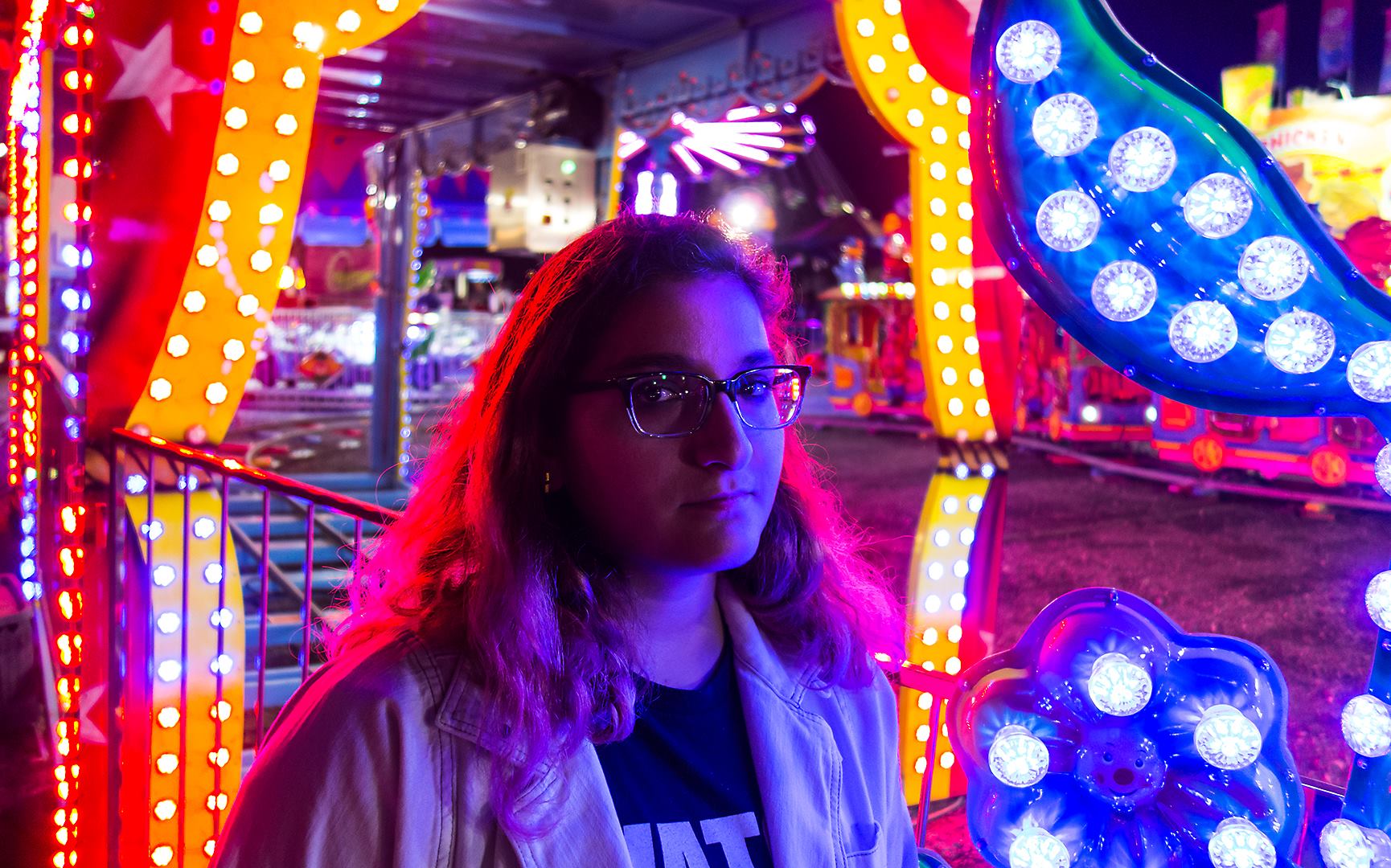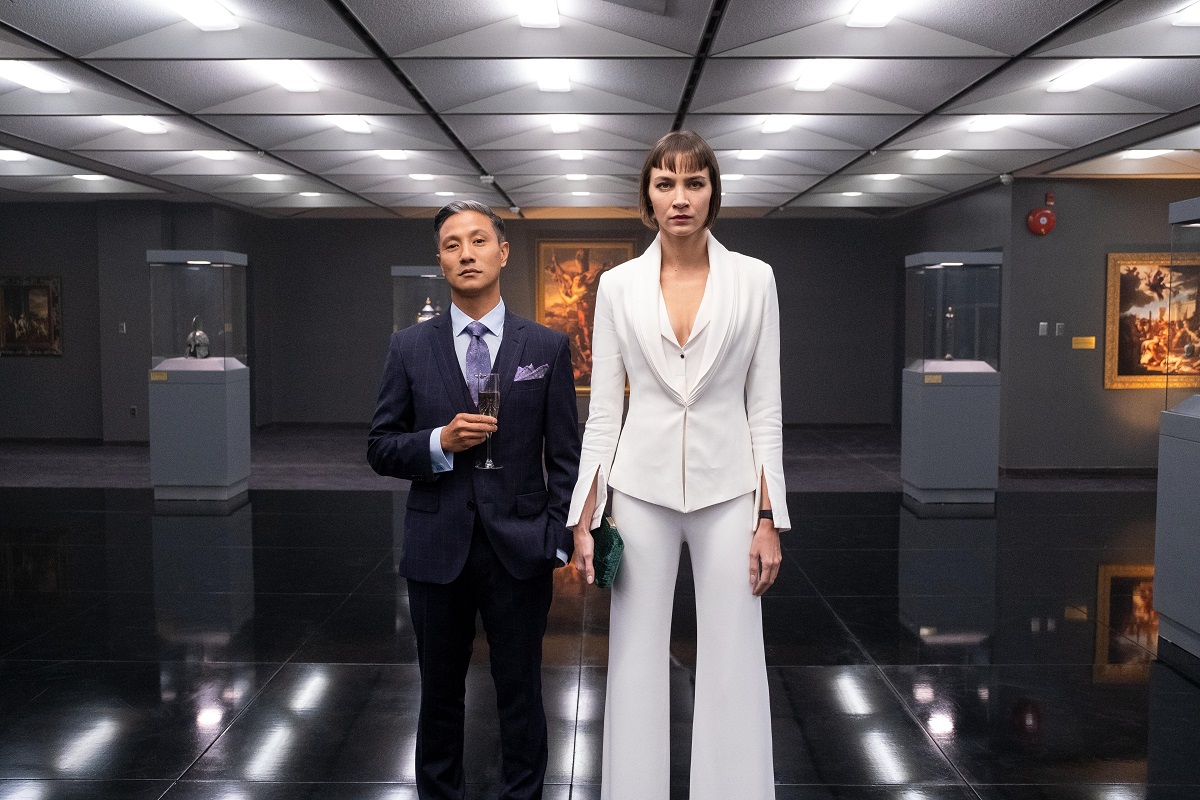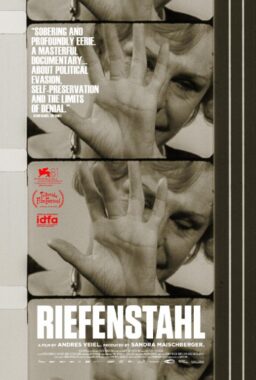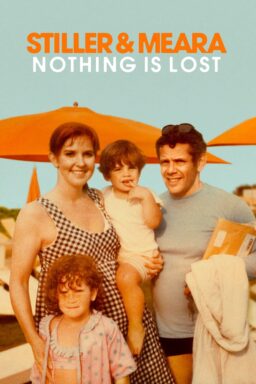Neither humans nor demons have much of a personality in Hulu’s “Helstrom,” one of the final series developed by Marvel Television after Marvel Studios’ restructuring folded the production company in December 2019. Now lacking a “Marvel Originals” moniker, “Helstrom” is missing clear stakes and intriguing characters, too. The under-sketched world building, the superficial questions about matters of faith, the utter absence of any sense of fear or tension—“Helstrom” is too disjointed to be enjoyable and too inconsistent to be enthralling. If you were hoping that the series’ focus on mysterious murders and shadowy serial killers would result in a twist on “Mindhunter” by way of “Constantine,” prepare for disappointment.
“Helstrom” (all 10 episodes of which premiere on Hulu on October 16) takes two established characters from Marvel Comics and reinvents them as estranged adults: Daimon (Tom Austen), an ethics professor teaching undergrads in Portland, Oregon, and Ana (Sydney Lemmon), an antiquities dealer who procures million-dollar items for the “idiots who send cars into space for fun” in San Francisco, California. (The show tweaks Ana’s name from the comics, perhaps because the original is too much of a tell.) Although Daimon and Ana haven’t talked in years, the siblings share a connection of childhood trauma. Their father was a renowned serial killer who kidnapped Ana and took her along with him on his murdering spree, while Daimon stayed behind with their mother, Victoria (Elizabeth Marvel), who suffered a mental breakdown. While Ana was aware of her father’s horrible acts, she couldn’t do anything to stop them; while Daimon was aware that his mother was unfit to take care of him, he couldn’t convince her that Ana wasn’t going to magically arrive on their doorstep again. Both of the Helstrom children grew up quickly and in horrible ways, but all that tragedy hasn’t brought them together—it’s kept them apart.
The twins share something else, too: unique powers that make them superhuman. Daimon, who works with an organization unofficially affiliated with the Catholic Church, uses his powers (the ability to generate fire and protect himself from violence) to perform exorcisms and battle demons. His mentor is Dr. Louise Hastings (June Carryl), head of the psychiatric hospital where Victoria is committed, and his new partner-in-training is Gabriella Rossetti (Ariana Guerra), a representative of the Vatican who wonders about Daimon’s abilities and is aghast by his cynicism. In San Francisco, Ana and her best friend and business partner, Chris Yen (Alain Uy), deal antiquities by day and hunt down and kill predators and abusers by night. Ana sees visions, can sense the history or motivations of a person by touching them, is an excellent fighter, and is able to attack others by slowing down their heart rate with one hover of her hand over a person’s chest.

“Helstrom” barely bothers with showing us how other people react to Daimon and Ana’s powers; one of the show’s most disappointing qualities is how poorly it communicates any interiority for the siblings, especially related to how others view their super strength, telekinesis, or other myriad abilities. Instead, premiere episode “Mother’s Little Helpers” hops between various locations to build up the siblings’ tensions and introduce every meaningful main character, jamming in so much story that the entire affair sags. (Full disclosure: It took me three hours to power through this 56-minute premiere just because the pacing was so unrelentingly tedious.) Daimon busts a young boy pretending to be inhabited by a demon (“The good news is, your son’s not possessed. The bad news is, he’s an asshole”), butts heads with the idealistic Gabriella (whose characterization practically screams, “I will end up a conflicted love interest!”), and spars with his mother, who we learn actually is possessed by a demon who is violent, cruel, and taunting. Meanwhile, in San Francisco, Ana orchestrates a man’s murder; collects a demon skull while on a reconnaissance trip with her ally Caretaker (Robert Wisdom), who helps battle supernatural baddies; and makes clear that unlike Daimon, she doesn’t care about her mother’s current predicament: “Please tell me the bitch is dead” is how she greets her brother during their reunion.
Once the siblings are depicted, in those sparse terms, as opposites, “Helstrom” tries to fill in additional details of their backstories but does so in such an erratic and haphazard way that the narrative is difficult to piece together. A slowed-down cover of Arcade Fire’s “My Body is a Cage” adds atmosphere to Gabriella’s inspection of the siblings’ files, as she learns through newspaper clippings, psychiatric hospital evaluations, and case reports that their father was a serial killer and a demon. But “Helstrom” seems unwilling to make clear how seriously we should take these concepts. Unlike other comic-book properties like “Constantine” or “Warrior Nun,” or prime-time fare like CBS’s “Evil,” Fox’s “The Exorcist,” or NBC’s “The Prodigal Son,” the interior mythology of “Helstrom” is thin, as are how characters operate in reaction to it.
There are so many directions in which “Helstrom” could go, but they’re left unpursued. Can monsters have souls? What should be done for people who are possessed? If they die when the demon dies, is that human loss worth it? What is Catholicism’s official stance on demons, and does Gabriella agree with it or not? Is her reliance on Daimon because she is attracted to him, or because she is looking for guidance in struggling with philosophical questions she suddenly can’t answer? Did Ana’s relationship with her father cause her any regret? What lessons did she learn from him about self-reliance and survival, and how does she differ from Daimon in that way? Although Daimon is presented as the most straightforward hero in this story, why are his reactions to tragic things—like the demon-led slaughter of nearly 30 fraternity members on the campus where he teaches—so muted? And Victoria, who serves as the prime example of what a demonic possession looks like, raises more questions than she answers about what powers these evil beings have. She can sprint across walls, she can throw people through the air with one glance, she can give people cancer—but she’s also suitably contained in a prison cell with one guard?

The ensemble does the best they can with the exposition-heavy dialogue they’re given. Austen and Lemmon always seem too old for Daimon and Ana’s tiring bickering, and they’re better with other characters than with each other. The real standouts are Carryl and Wisdom: Dr. Hastings and the Caretaker have a sort of uneasy alliance despite being tasked with keeping Daimon and Ana apart, and their respective actors exude the right combination of fatigue and exasperation in dealing with their younger charges.
For the most part, the tone here is relentlessly grim, complemented by drab production design and overly dark lighting, but “Helstrom” is never really scary. Demonic possession seems to mostly manifest as predictably zombie-like behavior, and tension is lacking because the details of how demons arrive in our world, and what they’re after in the first place, are mostly unaddressed. To be fair, there are some humorous throwaway lines (like Ana’s deadpan observation of Portland to Daimon, “The appalling amount of flannel here suits you”) and some unexpected sight gags (like the Caretaker putting a bright pink box of donuts in the back of a van decked out with anti-demon restraints). They’re few and far between, though, and the series’ first five episodes rely more on lobbing up additional obstacles for the Helstrom siblings (including an overly convoluted storyline with a “keeper demon,” a goofy-looking skull that looks like it was a last-minute prop pickup at Party City, not a sentient being that demands blood sacrifice) than truly digging into either character and determining what motivates them to work with or against each other.
If only “Helstrom” was more like its opening credits—which mimic a child’s sketches, transforming from one nightmarish image into another—the series might fulfill its spooky premise. A stretched-out hand reaching for the viewer becomes a face with its eyes scratched out; a smiling woman’s face transforms into a grimace as she holds a child’s hand; an array of nuns increasingly tower over small children; a monster with blood dripping from its claws melts into a child being consumed by a gargantuan black mass; fangs become trees in a forest, which transform into a bridge from which a person tumbles; and finally, a boy and girl are separated, dragged away from each other. Those are images that convey a fair amount of what “Helstrom” is putting onscreen, but the credits exude a macabre dynamism that the episodes themselves lack. “Helstrom” has very little interest in anything outside of its titular siblings—and that lack of imagination is its greatest flaw.
Five episodes screened for review.












